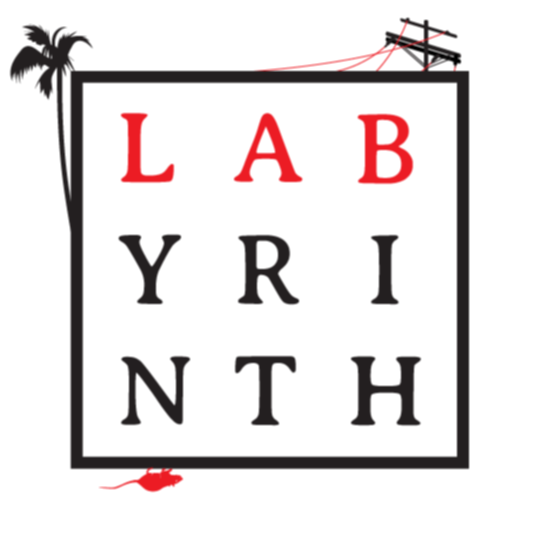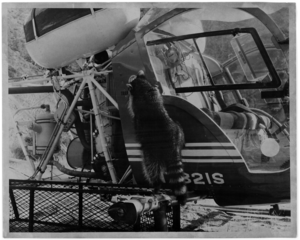In the 1960s, when Los Angeles residents called the city about a troublesome creature in their midst—a raccoon in the attic, a possum in the backyard for example—the city would dispatch an officer from Department of Animal Regulation with a trap, they would trap the animal and return to the city shelter with it. Normally such animals would be euthanized. The airlift was conceived as an alternative: instead of killing the animals, the city placed them on a modified Bell 47 helicopter, flew to the Angeles National Forest about 35 miles away, and released the animals into remote locations.
They did this every two weeks, for over 20 years. An estimated 10,000 animals were moved in this way. It stopped sometime in the early 1990s.
The Animal Airlift was aggressively promoted in the period 1969 through 1975. Numerous news articles appeared, many of them repeating elements of the press releases the Department created. But perhaps the most visible promotional moment came with the airing in 1970 if an episode of Bill Burrud’s Animal World subtitled “Guardian Angels”. Burrud was a minor celebrity in Los Angeles of the 1960s, and his Animal World program a direct competitor with both The Wonderful World of Disney and the Mutual of Omaha sponsored Wild Kingdom with the arguably more memorable Marlin Perkins.
A second film called “Proud Land” was made in 1975, featuring a reporter and the same district supervisor (Wes Mason). Both films confidently represent the Airlift as a merciful conservation program. The reality was probably different for the animals.

